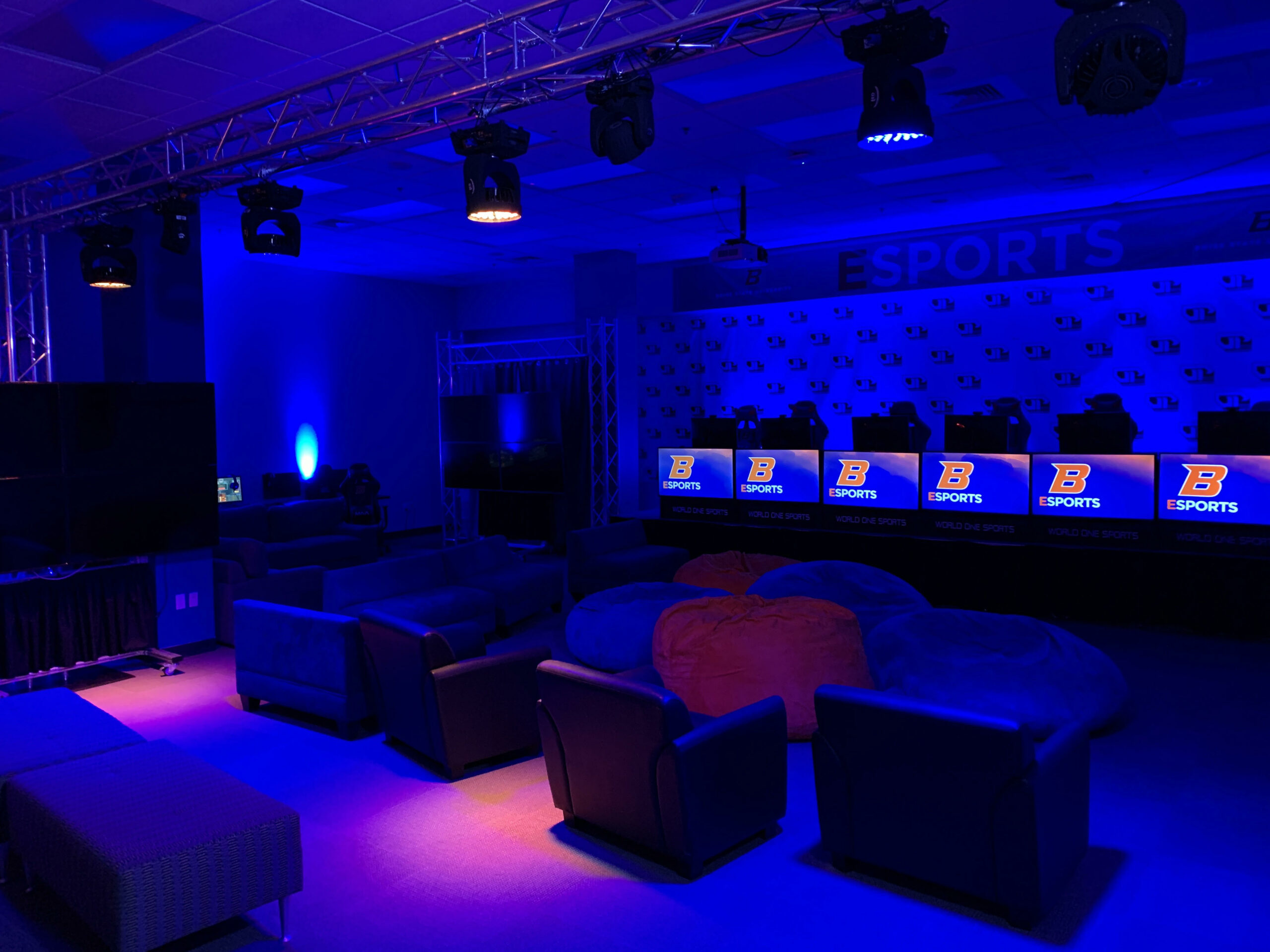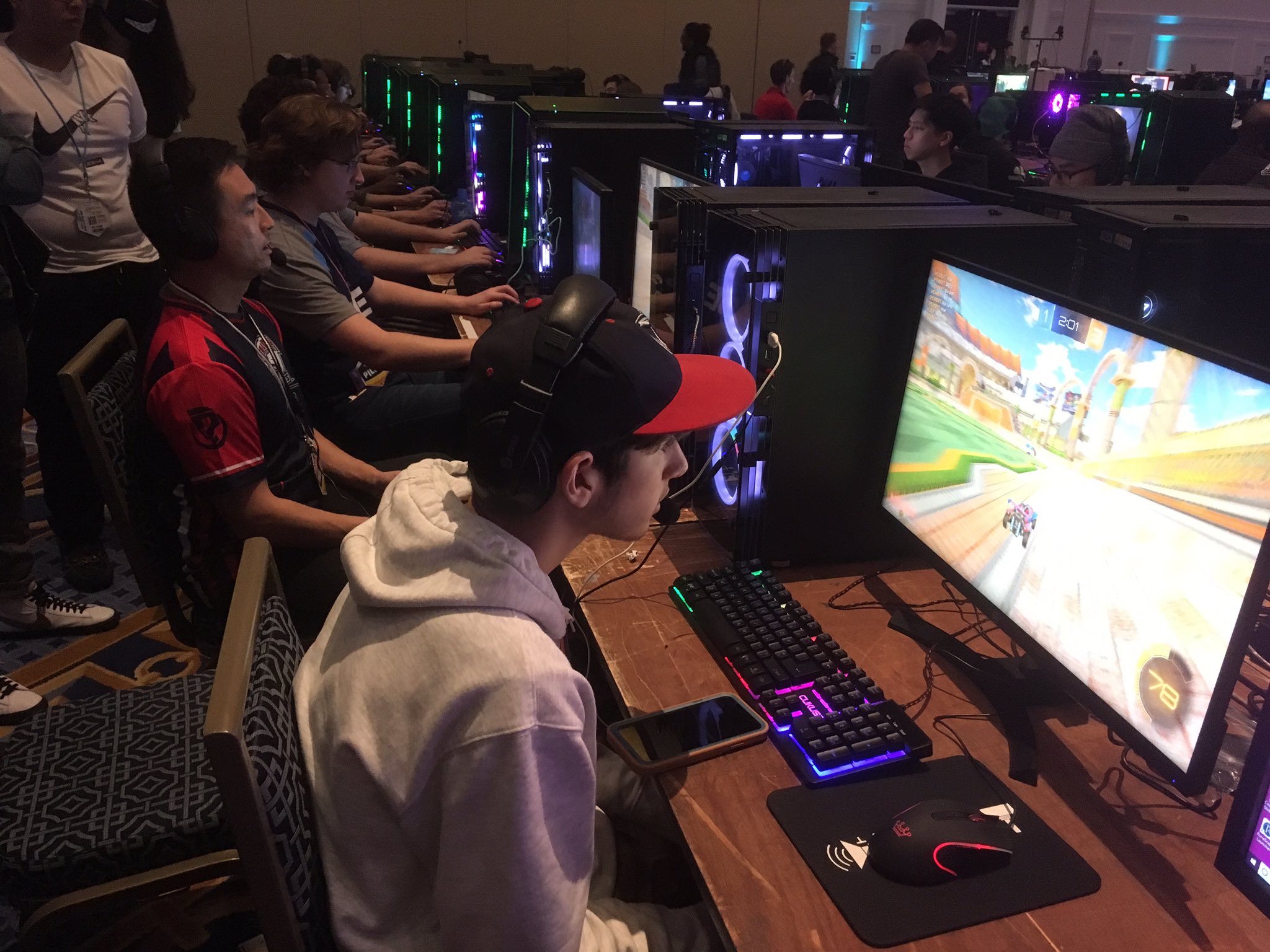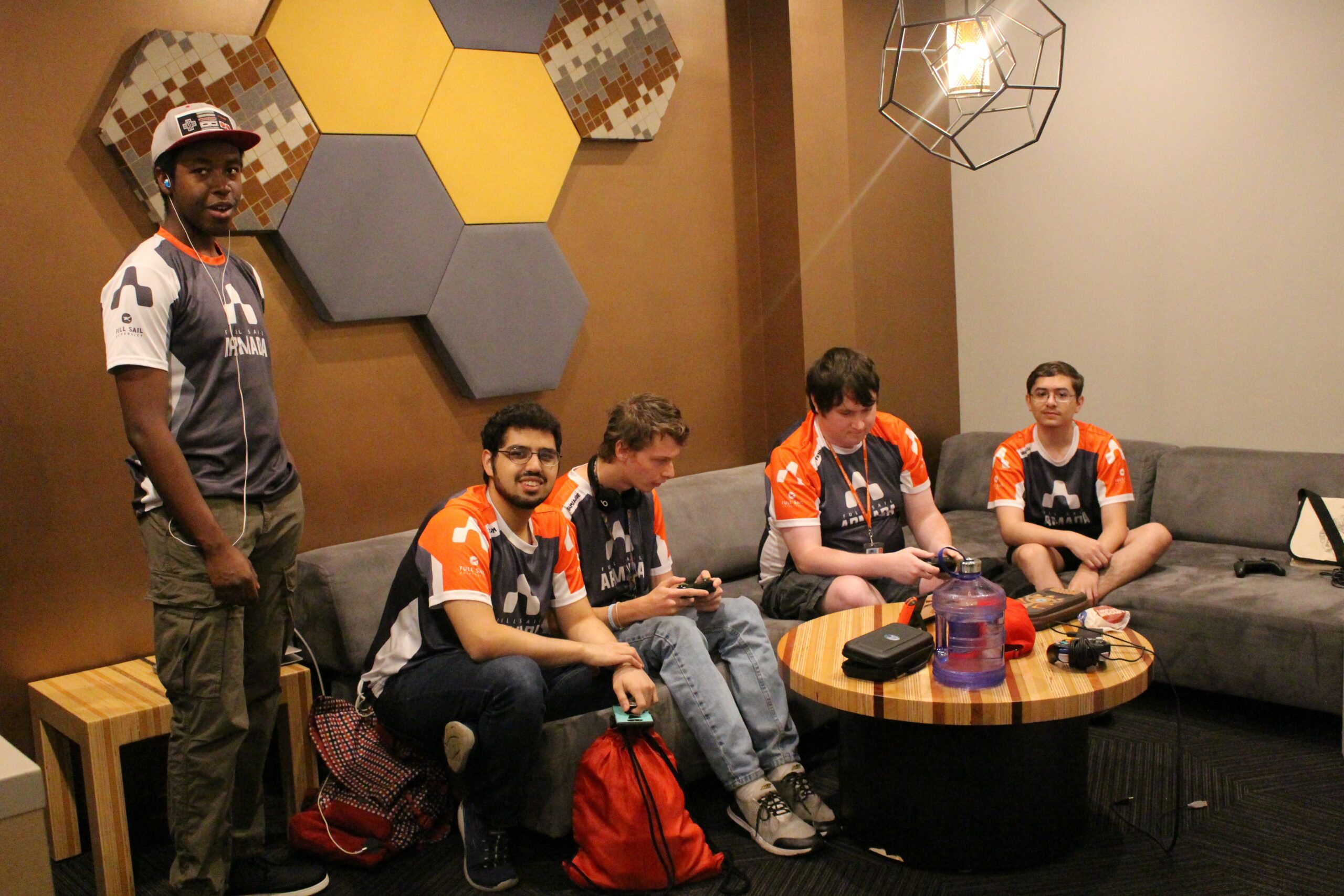 This column is part of a series of articles from the Academic Esports Guide, which serves as a primer for schools and faculty interested in getting started in competitive video gaming. Dana Hustedt, the Esports Director at Grand View University in Des Moines, Iowa, discusses two sides of the recruiting process – what student-athletes should be looking for when choosing colleges and what colleges should be considering when looking at potential recruits.
This column is part of a series of articles from the Academic Esports Guide, which serves as a primer for schools and faculty interested in getting started in competitive video gaming. Dana Hustedt, the Esports Director at Grand View University in Des Moines, Iowa, discusses two sides of the recruiting process – what student-athletes should be looking for when choosing colleges and what colleges should be considering when looking at potential recruits.
A guide for esports athletes
Before you decide to jump into the collegiate scene, ask yourself these questions:
- Do I intend to play competitively or leisurely?
- Am I ready to commit to being my best academically while competing at the collegiate level? You are not just playing video games, you are getting your degree, THEN playing your respective game.
- Am I willing to be my best self, give my best effort and teamwork even if I am not getting a full-ride scholarship? Am I willing to be a team player?
What to Look For: Program Development
Get an idea of the strength and stability of the university esports programs you are considering. Here are good questions to ask to gain that understanding:
- How long has the university esports program been in existence?
- How long has the coaching staff been at the program?
- How does the program develop its athletes as players and people?
- Does the school offer academic support?
- How does the coaching staff coach and support players in and out of game?
- How does the university administration support the esports program?
- What is the graduation rate of student-athletes in the program?
- Growth and sustainability
- Does the institution have the capacity or willingness to support additional space, staffing and budget needs should the program grow?
- Is a plan in place to sustain rapid growth with needed resources (equipment, budget and staff) while maintaining a quality experience?
I highly recommend that prospective esports players define their own criteria of needs and categorize them by importance:
- Will I have a developmental program to continue striving for excellence?
- Will I be supported academically to be my best?
- Will I have the proper equipment, tools and structure to become the best version of myself?
The answer to these questions needs to be “yes,” as student-athletes research the best fit for themselves and a university esports program.
Scholarships
Yes, esports scholarships are a very real thing. The skills they use in these games – hand-eye coordination, critical thinking and problem-solving – have huge crossover into work and day-to-day life. That said, I see far too often high school players’ messaging saying they are “SO good” at Fortnite or another game, directly followed by, “How much of a scholarship can I get?” Hold up there, and listen to the following:
Scholarships can be awarded in several different ways and will vary by institution. Scholarships are generally offered after the player is accepted to the institution and the player’s skill level has been fully evaluated by staff. Discuss the potential for a starting scholarship amount and the ability to earn more throughout your time in collegiate esports. Here are some existing structures common in esports programs.
- Universities have a designated amount of scholarship dollars to draw from (e.g., $50,000 of designated esports dollars) that can be allocated to the esports roster of players until exhausted.
- Depending on the caliber of institution, a varied scholarship structure may be offered, such as: five full-ride scholarships and five partial scholarships, and then 8 to 10 or more walk-on players. The structure will vary by institution and revenue levels.
- Scholarships may be awarded on a case-by-case basis, with an average level of student aid derived from a calculated algorithm. In this scenario, the institution could award the average level of aid per student, or go above and beyond with justification. The institutional aid could include academic scholarships, grants, outside scholarships and extra-curricular scholarships. Depending on how many students are in a program, the algorithm is used to determine a justifiable average level of student aid.
A guide for coaches
Athletes and Adversity
An esports athlete is a special type of recruit, one who needs to balance the demands of their sport, academics and the social aspects of the collegiate environment. Unfortunately, many fail. Often, when one area of a student’s life isn’t going well, it seems to seep into all other areas, and the individual becomes overwhelmed. We all face adversity at some point in our lives, but how we handle it determines our success. An esports coach or director is asked not only to navigate through their own adversity, but also to add each player’s problems and the challenges of running a new program to the mix. It can be challenging.
The recruiting process
There a variety of recruiting strategies most coaches will follow. Some of the more obvious are:
- Word-of-mouth (heavily used).
- Live tournament events and tryouts – nothing wrong with asking for a tryout. Worst-case scenario is you get a no, and you can find another place that may suit you better.
- Recruiting platforms.
- Discord channels, media presence, and highlight clips.
The nature and structure of gaming allows for communication and relationship development that enhances the word-of-mouth approach. Also, social media outlets and Discord channels allow instant and direct communication to potential recruits. There isn’t one right way to recruit at the collegiate level. I have a traditional sports background, and I apply my experiences to esports recruiting. My colleagues and I have different recruiting styles.
I would describe my recruiting style as a vested, personalized approach. I am naturally suited to act as a parent to my student-athletes, as I know that many may come from broken or unsupported homes, and I understand how each area of their lives impacts their development and performance. Each program is attempting to establish a unique culture implemented through team standards, values and goals. Developing relationships with each student helps create the best collegiate experience and is vital to the success of the program, on and off screen. If a student feels welcomed and valued from their first visit, they will leave with confidence in your program and university.
For an early collegiate program, it is natural to search for the key to success, but unfortunately there is not a concrete answer. In many cases, a strategy that focuses solely on recruiting the best gaming talent only leads to frustration, with the likely outcome being a player’s early departure from the institution. A better approach is to think more holistically about each student, and how to build up their time management skills, work ethic, attitude, character, mental stability and academic success, for instance.
When recruiting prospective esports candidates, I ask the following questions:
- Will the student be able to handle the academic load of college, as well as the time commitment of playing competitive esports?
- Will our institution provide the educational opportunities that are the best fit for this student’s passions and future endeavors?
- Is our program able to fulfill the student’s competitive needs and desires?
- What skill level can I afford? In other words, some students may expect a full-ride scholarship offer because they have put a price on their skill level. Realistically, most schools cannot provide this unless they have a cost-effective scholarship structure. Deciding how you can match a player’s skillset with worthy “compensation” becomes a challenge.

The Campus Visit
Prospect visits play a critical role in helping players select an institution that is best suited for them. Being intentional about the campus appearance (cleanliness), the people they encounter (friendly and welcoming), and the overall ambiance (positive vibes) throughout prospective student visits is important because each plays a role in helping students decide between schools.
A successful prospect visit at my institution will (theoretically) follow these steps:
- Students will meet with their dedicated first-year or transfer admissions counselor. This visit entails discussing their projected academic progression and succession plan to graduate from the institution.
- Students and/or family will discuss financial aid, grants and scholarships.This time allows the student to discuss available institutional aid, grants, any outside scholarship funding, student loan options and payment plans, and FAFSA questions.
- Students will meet with a faculty member from an academic major of interest.Meeting faculty and staff from their projected major of interest allows the student to gain a better understanding of their academic journey as well as the potential opportunities at the institution and beyond.
- Students will visit the esports arena with the director, coach, and a player from their prospective team.I sit down with students and/or parents to address any questions, comments or concerns. I have found that parents can be leery of letting their children attend college for competitive video gaming, so this is important. Emphasizing that the success of players is dependent on their academic progress can be reassuring to parents. As a student-athletes, it is mandatory that players in our program maintain a 2.0 GPA. Implementing mandatory weekly study tables has proven to be beneficial in our program. In our first semester after implementation, there was a notable improvement in academic success, with seven students earning a 4.0 GPA and 15 earning above a 3.0 GPA.

Retention
The first semester of college is crucial to retention, whether or not students participate in extracurricular activities or sports. The first six weeks are extremely important to their psychological, emotional and mental state, as students attempt to answer questions such as: “Do I belong here?” and “How do I fit in to this new community?” The camaraderie and success of a team often play bigger roles than academic success in terms of student retention.
Unlike traditional sports, esports athletes can spend five to eight hours per day honing their gaming skills, and unfortunately, this means that some may neglect their academic studies. This is true at both the high school and collegiate levels. The esports staff must pay close attention to each aspect contributing to the overall institutional experience for each player, so an intervention can take place immediately if any aspect suffers. It is vital for students to feel engaged, supported and encouraged by peers, coaches and faculty.
Retention can be improved by implementing structures outside of team practices and competition, such as creating a routine for players. At Grand View, we have found success with mandatory study tables for all students that each last for one hour. This emphasizes the importance of their education, and helps athletes to hold each other accountable while building time management skills. We also have implemented weekly team workouts to build physical health. Surprisingly, this unfamiliar setting for many has resulted in enhanced camaraderie and team cohesiveness. Explore similar opportunities for teamwork and be prepared to participate as an incoming player.
The Experience
Think back on your collegiate experience and identify the most positive aspects. I was a college athlete, so my approach to esports is influenced by the most positive elements of my own college experience, including:
- Coaches and staff
- Knowledge shared and gained
- Community and inclusiveness
- Pride in identity (school and self)
The beauty of esports is that it brings together people from all backgrounds, ages and skill levels. Esports is a tight knit community. Its rapid growth, including the sheer number of players and spectators today, proves it is a global sport that will only continue to grow. Let’s do our part in making esports prevalent and relevant.







